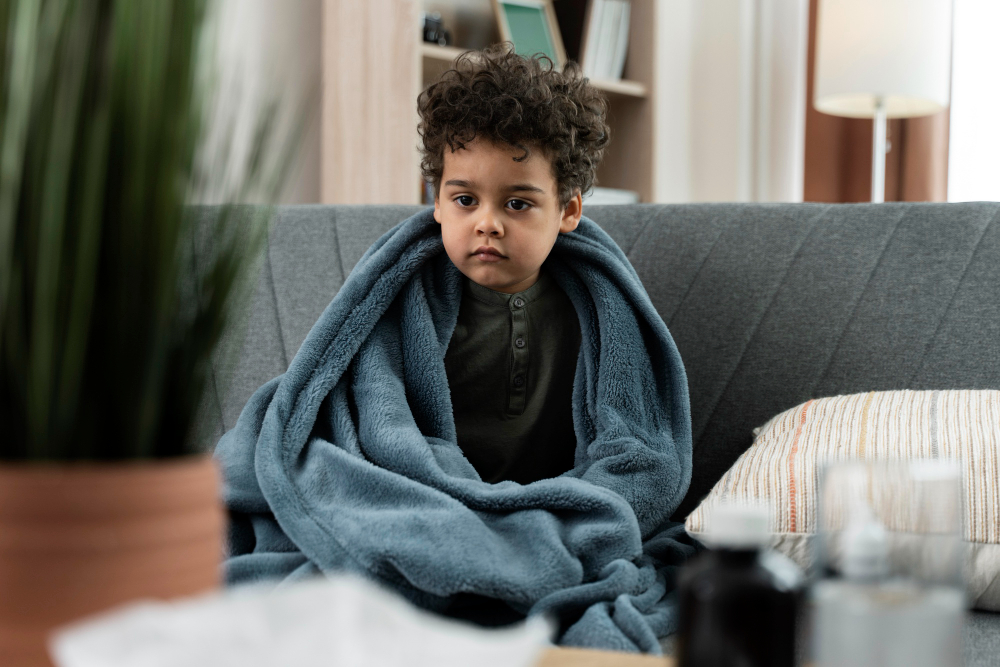Introduction to Monsoon Illness in Children
Monsoon illness in children is common during the rainy season. Because the weather is wet and humid, germs spread more easily. As a result, kids become more likely to catch infections. Monsoon diseases in kids include colds, flu, diarrhea, and mosquito-borne illnesses. According to the World Health Organization (WHO), children are at higher risk during this time. Therefore, parents should stay alert and follow monsoon health tips for children to keep them safe.
Common Symptoms
Children may show different signs when they have a monsoon illness. However, some symptoms are more common than others. Watch for these signs:
Sometimes, symptoms can be mild. But in other cases, they may become severe. If your child looks very sick, seek help quickly.
Main Causes and Risk Factors
Many germs cause monsoon diseases in kids. For example, bacteria, viruses, and parasites spread faster in wet weather. Here are some main causes and risk factors:
Because children often play outside, they face more exposure to these risks. In addition, their immune systems are still developing, so they get sick more easily.
Diagnosis Methods
Doctors use several ways to diagnose monsoon illness in children. First, they ask about symptoms and recent activities. Next, they may check your child’s body for signs of infection. Sometimes, doctors order tests to confirm the illness. These tests may include:
Early diagnosis helps doctors start the right treatment quickly. Therefore, do not delay if your child feels unwell during the rainy season.
Effective Treatments
Treatment for monsoon illness in children depends on the cause. For most viral infections, rest and fluids help the body heal. However, some illnesses need medicine. Here are common treatments:
Always follow the doctor’s advice. Never give antibiotics without a prescription. In addition, make sure your child drinks enough water and eats light, healthy food.
Prevention Tips and Lifestyle Guidance
Preventing childhood infections during rainy season is possible with simple steps. Here are some monsoon health tips for children:
Because prevention is better than cure, these habits can protect your child from many monsoon diseases in kids.
When to Consult a Doctor
Sometimes, home care is not enough. If your child has any of these signs, consult a doctor right away:
Early medical help can prevent serious problems. Therefore, do not wait if you are worried about your child’s health.
Consult a pediatrician for personalized advice on monsoon illness in children.


